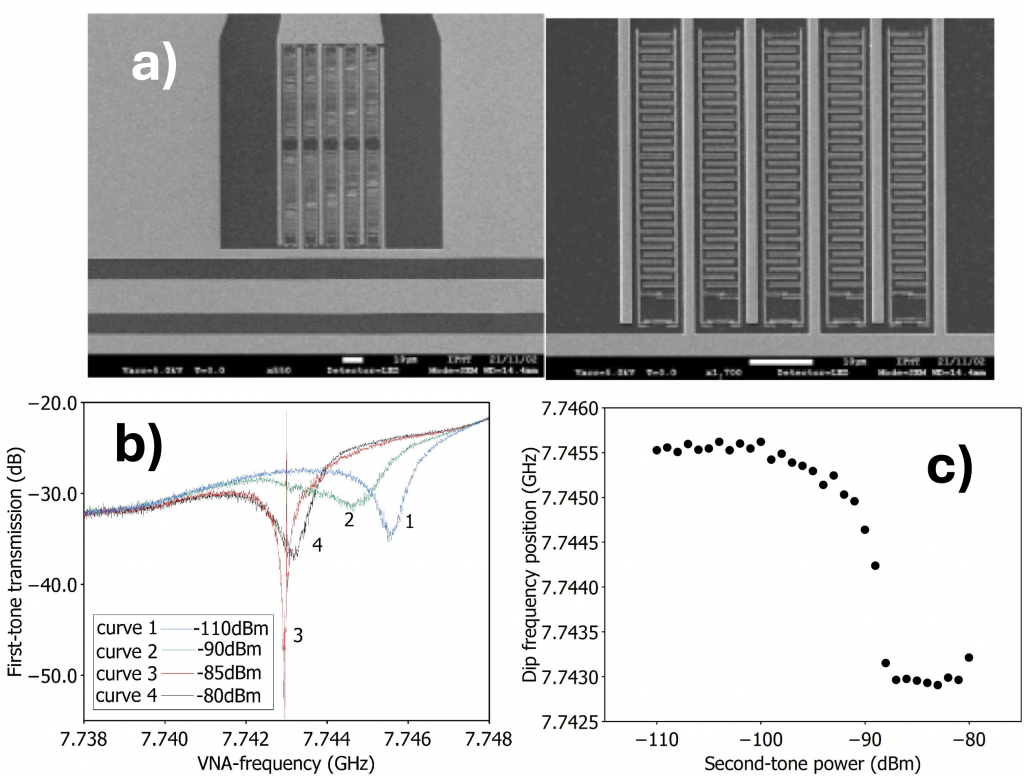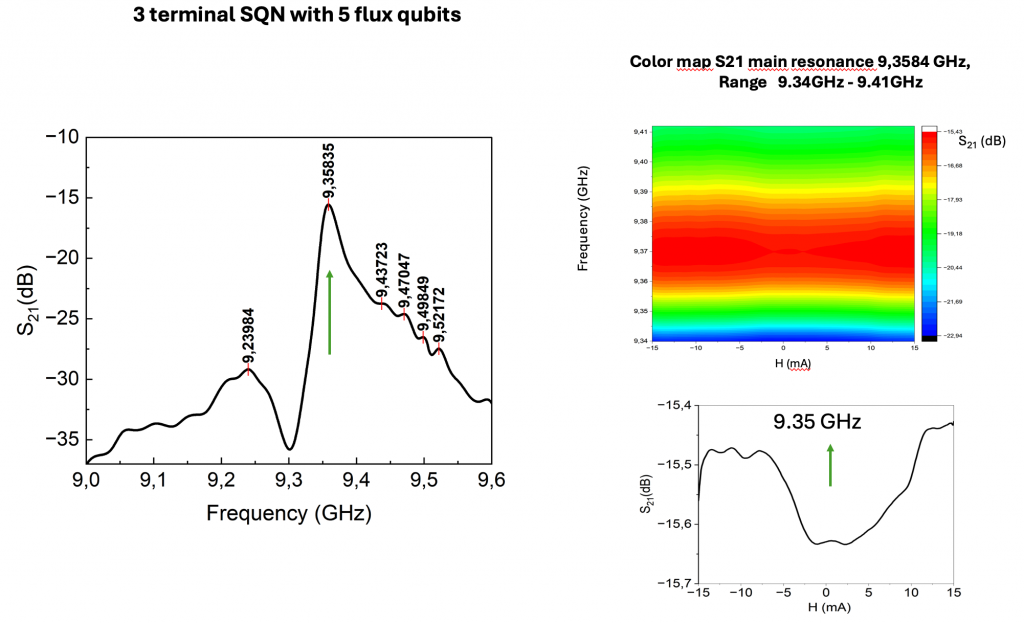Berardo Ruggiero1, Carmela Bonavolontà1, Gianluca Coda1, Alessio Crescitelli1, Valentina Di Meo1, Emanuela Esposito1, Massimo Valentino1, Paolo Vanacore1, Claudio Gatti2, Emanuele Enrico3, Luca Fasolo3, Giorgio Brida3, Mikhail Fistoul4, Gregor Olsner5, Francesco Romeo6, Paolo Silvestrini7,1, Mikhail Lisitskiy8
1. ISASI CNR ,Via Campi Flegrei 34, I- 80078, Pozzuoli (Naples), Italy
2. LNF INFN , Via Enrico Fermi 54, I- 00044 , Frascati (Rome), Italy
3. INRiM, Strada delle Cacce 91, I-10135 , Turin Italy
4. Ruhr University Bochum, Universitätsstraße 150, D-44801, Germany
5. Leibniz Institute of Photonic Technology, Albert-Einstein-Straße 9, D-07745 Jena, Germany
6. Università degli Studi di Salerno, Via Giovanni Paolo II 132, I- 84084 Fisciano (Salerno), Italy
7. Università della Campania “Luigi Vanvitelli”, Viale Lincoln 5 I-81100 Caserta
8. SPIN CNR ,Via Campi Flegrei 34, I- 80078, Pozzuoli (Naples), Italy
Abstract
We have carried out a theoretical and experimental study of collective quantum dynamics of a superconducting quantum network (SQN) embedded in resonators in the regime of substantial disorder
We have carried out a theoretical and experimental study of collective quantum dynamics of a superconducting quantum network (SQN) embedded in resonators in the regime of substantial disorder (Fig.1a). A collective state takes place when the interaction between qubits overcomes the disorder in the qubit frequencies, which gives rise to a drastic increase of the amplitude of the dominant resonance. Moreover, when the SQN is coupled to cavity photons, the dominant resonant frequency substantially shifts depending on the number of photons, due to a collective ac-Stark effect (Fig.1 b) and c))
A theoretical investigation and experimental realization of a quantum device with 10 superconducting qubits was carried out. T-type two resonators SQN devices with 10 flux qubits were designed, fabricated (Fig.1), and tested at ultra-low temperatures (15 mK) in terms of microwave measurements of scattering parameters and two-tone spectra (Fig.1). A substantial shift of the resonant drop in the transmission coefficient induced by the pump second-tone signal was observed, and this effect can be explained by the model based on a non-linear multiphoton interaction between the pump microwave signal and qubits of the SQN (Fig.1).

Fig.1 (a) 1 SEM picture of three-terminal device with 10 C-shunted flux qubits (b) First-tone transmission coefficient (S21) vs VNA-frequency dependencies recorded at different powers of the second-tone signal of frequency of 7.443 GHz applied to the Port 3. T=15 mK, zero magnetic field. (c) Dependence of the frequency position of the resonant drop reported in (b) as a function of the power of the second-tone signal
The scientific activity also concerns experimental and theoretical studies of new topologies of superconducting Josephson 2D lattices and their analysis in the view of search of quantum collective states taking into account Bose condensation phenomenon and their connections with entagled collective states in SQN with unconventional topologies. Theoretical and experimental study activities aimed at examining the response of superconducting qubit networks of various different architectures have been proposed. SQN including 5 qubits with 4 Josephson junctions (Fig. 2) have been recently measured. Also a comparison between linerar and cross SQN topologies have been studied.

Fig.2 The obtained dominant resonance in S21(ω) dependence and magnetic field oscillation of S21 indicate the presence of a strong long-range interaction between qubits leading to the quantum collective state
Acknowledgements
This activity is partially supported from the PNRR MUR National Quantum Science and Technology Institute – NQSTI (Partenariato Esteso 04: Scienze e Tecnologie Quantistiche PE0000023-Spoke 6) and has received funds from the European Union’s Horizon 2020 Research and Innovation Programme under Grant Agreement No. 863313 (SUPERGALAX).
Research activity as https://nqsti.it/news/demonstration-quantum-networks-qubits-highly-entangled-quantum-phases
Contacts: Berardo Ruggiero
References
C. Gatti et al., “Coherent Quantum Network of Superconducting Qubits as a Highly Sensitive Detector of Microwave Photons for Searching of Galactic Axions,” in IEEE Transactions on Applied Superconductivity 33 (5), p. 1501705, (August 2023) – doi: 10.1109/TASC.2023.3263807
E. Enrico et al. “Supeconducting qubit network as a single microwave photon detector for Galactic Axion search” in IEEE Transactions on Applied Superconductivity 34 (3), p. 1500306, (May 2024) – doi: 10.1109/TASC.2023.3340640

